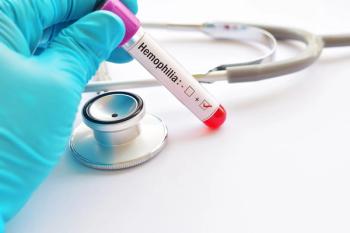
A Reminder to Buckle Up, Slow Down, and Ride With a Mature Driver
As pediatricians, we have been encouragingcar seat and seat belt use by our patients formany years-checking them off our list ofanticipatory guidance to be given at healthmaintenance visits. If we are not runningshort on time, we may even remember to remind preteensthat they should not get in the car with anyonewho has been drinking or using drugs. But are thereother issues we should be mentioning related to gettinginto cars that pose a risk to our patients?
As pediatricians, we have been encouragingcar seat and seat belt use by our patients formany years-checking them off our list ofanticipatory guidance to be given at healthmaintenance visits. If we are not runningshort on time, we may even remember to remind preteensthat they should not get in the car with anyonewho has been drinking or using drugs. But are thereother issues we should be mentioning related to gettinginto cars that pose a risk to our patients?
In a study recently published in Archives of Pediatricsand Adolescent Medicine, Winston and colleagues1 investigatedrisk factors for death among pediatric passengersin motor vehicles. Using 2 US National Highway TrafficSafety Administration databases (the Fatality AnalysisReporting System and the National Automotive SamplingSystem [NASS]/Crashworthiness Data System [CDS]),the authors examined records from 2000 through 2005of over 45,000 children aged 8 to 17 years who had beeninvolved in motor vehicle accidents severe enough to requirea vehicle to be towed away. In addition, because theNASS/CDS is a representative sample, the crashes includedcan be considered to correspond to ones involvingover 2.5 million children.
The authors included accidents in which a pediatricpassenger died, someone else was killed but a pediatricpassenger survived, or a pediatric patient survived atow-away crash. They separated the passengers into3 groups-those 8 to 12 years old ("older children"), 13to 15 years old ("predrivers"), and 16 to 17 years old(who may be drivers themselves). The researchers thenlooked at several variables to determine the role eachplayed in fatality rates: these included driver age andlicense status, driver alcohol use, passenger restraint use,passenger seat position, time of day, day of the week,season, type of car, and speed limit.
The greatest predictors of an increased risk of fatalityincluded:
- Lack of use of restraints.
- Travel at medium or high speed (between 45 and 54 mph and at least 55 mph, respectively).
- A young driver (under 16 years of age).
Almost two thirds of the fatalities occurred withmale drivers. Also, fatalities were more common onweekends. More than one fifth of the cases involved alcohol.While the risk of death was greatest with driversunder 16 years of age, the frequency of these crasheswas much lower than those with drivers 16 to 19 yearsold (presumably because of the higher number of driversin the latter age group). The risk of death was atleast double with a driver younger than 19 years thanwith a driver at least 25 years old. As passenger age increasedthrough the preteen and teen years, the fatalityrate increased as well.
While the study is limited by some missing informationin the databases, it does highlight the importanceof making our patients aware of the dangers ofgetting into a car with a young driver. In addition to remindingpreteens and teenagers about the risks of intoxicateddrivers, we should educate them and their parentsabout other hazardous driving situations. We candiscuss the risks of getting in the car with a young driver,driving on medium- and high-speed roads, and notwearing a seat belt. We also can remind parents aboutthe importance of knowing who is driving their child,and of staying on top of the safety of a situation.
It is easy to get caught up in the excitement whenfriends and siblings get their driver's license. We needto remind patients and their families that driving can bedangerous-and that good judgment must be exercisedat all times.
References:
- Winston FK, Kallan MJ, Senserrick TM, Elliott MR. Risk factors for death among older child and teenaged motor vehicle passengers. Arch Pediatr Adolesc Med. 2008;162:253-260.
Newsletter
Access practical, evidence-based guidance to support better care for our youngest patients. Join our email list for the latest clinical updates.











